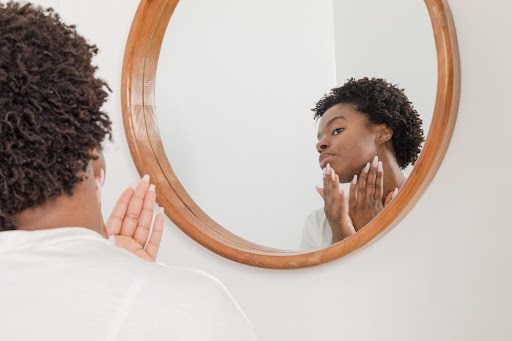No matter how hard you have tried not to pick or pop your acne, there are bound to be times you just couldn’t resist. If you have suffered from acne and finally have it under control, it can literally be life-changing. But when you are left with dark spots and pitted scars, you may still feel self-conscious.
Certain products can help reduce acne scars; however, they can take months to make even a slight difference. If you want faster results, then microneedling is probably one of the most effective ways to eliminate dark spots and acne scars. You will also get brighter, healthier and smoother skin following microneedling treatment.
Want to know more? Read on to find out how microneedling works, what clinical studies have shown and what practitioners say about microneedling treatment.
Table of Contents
How Microneedling Works
Microneedling is a treatment that uses various tools. One is a derma roller, which has tiny needles over the surface. The needles make tiny pricks into your skin as the roller crosses the surface. Another tool is a microneedling pen. This looks like a pen (which explains the name), but instead of a nib, it has tiny needles. The needles move back and forth, puncturing the skin as the pen runs over the area being treated.
Microneedling basically causes trauma to the skin, stimulating cell turnover and collagen production. The result is depressed acne scars and dark spots diminish, becoming hard to detect after a few treatments. Skin also looks smoother, plumper and firmer, and — as an added bonus — if you have fine lines and wrinkles, they will also diminish.
We spoke with X, who regularly performs microneedling treatments at Shumaila’s Aesthetic and Laser Clinics in London and Essex.
“Following microneedling treatment, I have seen significant improvement in acne scars, dark marks and general skin condition. Seeing how much difference I can make to my clients’ self-confidence is one of the most rewarding parts of my role at Shumaila’s.”
Microneedling and Other Types of Scars
The most common scars from acne are depressed or pitted scars and dark spots. These respond well to microneedling. However, raised scars, otherwise called keloid scars, which may be from acne or other causes, should not be treated with microneedling.
You don’t need to just take our word for it. Clinical studies have shown that microneedling can significantly reduce acne scars.
Microneedling treatments can also help to reduce scars that are a result of:
- Burns
- Surgery
- Melasma
- Injuries.
Additionally, microneedling can help to reduce the appearance of:
- Stretch marks
- Large pores.
Microneedling Aftercare
For optimal results from microneedling, it is critical you follow all of the aftercare instructions you are provided with. Because your skin has tiny puncture wounds, there are certain things you should definitely avoid following treatment.
It is recommended for three days after your treatment, you avoid:
- Exposing treated skin to the sun
- Sunbeds
- Using products containing alcohol or salicylic acid
- Exfoliating or using exfoliating products
- Swimming
- Vigorous exercise.
You may be provided with a product to apply or recommended one. If not, stick to using non-perfumed products. Baby and nappy creams are generally non-perfumed and great low-cost options.
Microneedling Q & A
Can anyone have microneedling?
Most people will benefit from microneedling; your practitioner should provide a free consultation and advise if you are suitable. However, if you have active acne or skin conditions such as rosacea or eczema, microneedling is not recommended. Additionally, microneedling shouldn’t be performed if you’re pregnant — or undergoing or just finished any radiation therapy.
How fast will I see results?
Microneedling works fast. In fact, you can see results after your first treatment within a week. However, you will generally need at least three sessions for acne scars and dark spots to start to disappear and for your skin to look smoother.
Is microneedling painful?
Before the treatment, numbing cream is applied, making it virtually painless. Some people find it slightly uncomfortable and the treated area will be red and may feel a little tender and swollen immediately after the treatment. But these side effects will generally only last for a few hours.
How often can I have microneedling treatments?
Because microneedling causes damage to the surface of the skin, this needs time to heal. It is the healing process that actually makes acne scars and dark spots fade as the body produces collagen and elastin to repair the tiny puncture wounds. Although there is no limit on how many microneedling sessions you can have, it is recommended that you wait four weeks between each treatment.
















